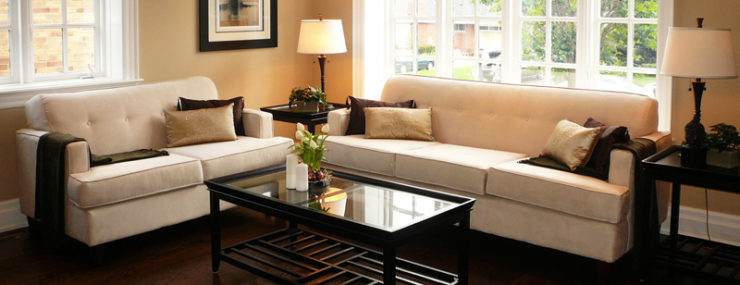When selling your home, it’s important to understand the differences between home staging vs. decorating.
Most real estate agents today acknowledge that, in the majority of cases, staging a home makes it sell faster and for more money. Convincing sellers of the same can be a difficult challenge.
Why Home Staging Matters
A fast sale at the highest price is the most desirable outcome for sellers. Staging directly effects that outcome, yet getting sellers to grudgingly accept that their home will require staging is one of the trickiest parts of getting a listing ready to sell — mainly because staging sounds exactly like redecorating to them.
Home staging vs. decorating, however, are two entirely different things. Sellers may hear a suggestion that they have the property staged as a criticism of their own taste in decorating, and they resist. Plus there is the cost, which in most cases is the seller’s responsibility.
Here are key points to help clients understand the differences between home staging vs. decorating.
1. Staging vs. Decorating: Different Goals
Stagers and interior designers may adhere to some similar design principles, but they do it for different reasons. The decorator strives to make a home reflect the taste and support the lifestyle of the owners. A stagers’ purpose is to transform a home so it appeals to the greatest number of potential buyers.
Staging is actually more like merchandising than decorating. Like a good product stylist, a stager’s fundamental goal is to draw buyers’ attention to a property’s best features while minimizing its less desirable aspects. The materials, furnishings and accessories stagers use to achieve that goal will be tailored to the target potential buyers.
And the final design will highlight the most common buyer desires — a home that’s in move-in condition with spacious rooms, enhanced lighting and a neutral color palate.
2. Stagers Maintain Inventory, Decorators Buy It
Another key difference of staging vs. decorating is inventory. Who owns all the “stuff?” A stager will often have a large inventory of furniture and accessories in a variety of styles to show each home in the best possible light and appeal to the maximum possible number of buyers. A decorator, on the other hand, buys all new decor for every client. Those purchases tend to be very personal.
The inventory stagers carry differs from what an interior designer might purchase as well. One of the most common problems stagers confront is furnishings that are not well-proportioned for the room. So their inventory not only includes varied styles and colors but also pieces in a variety of scales.
Properly scaled furnishings and accessories can make a snug room feel much more spacious — a common buyer “must-have.” The stager’s fee covers these added pieces for a specified period of time, typically 90 days, followed by a month to month rental period. The stager will provide a quote.
3. Staging Helps Buyers Envision Living In a Home
Staging shows buyers how to use the spaces in a home so that they can envision themselves living there. This is a key difference between staging vs. decorating, because the goal of an interior designer is to personalize the home for the current owner.
An interior designer helps clients outfit and use their spaces to suit their specific needs, tastes and lifestyles. Stagers demonstrate how rooms can best be used in a way that is intended to appeal to the majority of buyers. Very few buyers can imagine how to use a space without such visual aids. Staging neutralizes the home, allowing potential buyers to envision the home for themselves.
4. A Stager is a Stylist
A good stager also doubles as a photo stylist. A good stager will make every room look good in photographs as well as in person. All buyers today see a property online before they decide to spend their precious time seeing a home in person. So good staging and excellent photography are essential because a home’s online appearance is the new “curb appeal.”
Effective staging and photography will make a listing stand out against the competition. Buyers look at a lot of listings online before choosing the ones they want to visit. And, when they do visit in person, buyers often tour several properties a day in their search for “the one.”
Before long, all homes online start to run together in buyers’ minds. The reason to choose home staging vs. interior decorating when selling your home is that good staging differentiates your listing from the competition and makes it memorable.
More than 50% of the homes on the market today are staged. By not staging, your home will not stand well against your competition. Staging is worth the investment to get the best possible price for your home
And if you’re serious about valuing your own home I’d be happy to help! Contact me directly.
Curious About Your Home’s Current Value?
Fill Out The Form Below For A Complimentary Report
You’ll receive:
- Summary of comparable listings near you
- Complete property details including photos and pricing for homes selling in your neighborhood
- Comparison of home list price vs. actual selling price for recently sold homes
- Pricing trends of your neighborhood
- Recommendations on how to achieve the best possible price
- Information to suggest a good time to sell




